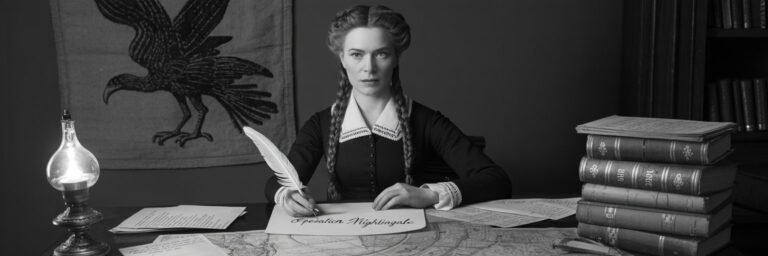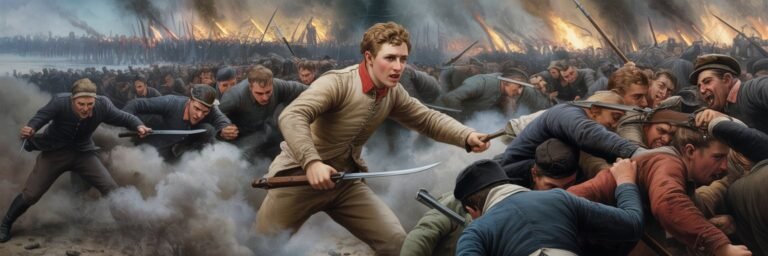INTRODUCTION
In the annals of human history, few eras are as captivating – or as complicated – as the period in which the Crusades unfolded. These military campaigns, performed in the name of religious devotion and territorial expansion from the 11th to the 15th century, illuminate a time when different civilizations clashed and cultures intertwined in profound ways. From enhancing our understanding of medieval society and religion to shaping our comprehension of conflict, the Crusades offer invaluable lessons about the complexities and contradictions of human behavior. Yet, like any historical event, they are also shrouded in controversy and subject to varied interpretations, enriched with symbolisms that continue to resonate across the centuries.
HISTORICAL BACKGROUND
The origin of the Crusades lies in the Seljuk Turks’ conquest of Jerusalem in 1071, followed by their victory over the Byzantine army in the Battle of Manzikert. With the Holy Land under the thumb of a new Islamic empire and the Byzantine Empire considerably weakened, Pope Urban II delivered an unprecedented speech in 1095 at the Council of Clermont. His call for Christians across Europe to take up arms against the Islamic Seljuk Turks lit the fuse that ignited what we now know as the First Crusade. Over the next two centuries, at least seven major Crusades swept through the Eastern Mediterranean.
From the siege of Antioch in 1098 to the infamous Sack of Constantinople in 1204, a range of events, characterized by both grandeur and brutality, played out. Stories of knights, priests, kings, peasants, and women, all woven together in a complex tapestry of faith and ambition, emerge from this riveting past.
THEORIES AND INTERPRETATIONS
The Crusades have been subjected to varied interpretations over the centuries. Medieval European chroniclers mainly envisioned them as holy wars, bathed in divine sanction. They outlined a narrative of Europe’s Christian soldiers reclaiming Jerusalem and other regions of the Holy Land occupied by Muslims.
However, in the late 19th and early 20th centuries, historians like Carl Erdmann proposed a different interpretation, looking at the Crusades from a socio-economic perspective. He posited that the Crusades were a manifestation of the Church trying to harness the violent tendencies of European nobility, channelling this aggression towards external enemies in the East.
In more recent decades, historians, including Jonathan Riley-Smith and Thomas Madden, have sought to reassess such interpretations. They argue that religion, rather than territorial or economic gain, was the primary motivation for most Crusaders. However, this view is far from universally accepted, and the debate continues.
MYSTERIES AND CONTROVERSIES
Despite meticulous studies, the Crusades still harbor mysteries and controversies. One of the enduring enigmas is the alleged finding of the Holy Lance during the Siege of Antiock in 1098. The lance, believed to have pierced the side of Christ during Crucifixion, was claimed to have been discovered by a monk named Peter Bartholomew. Whether this was a miraculous spiritual revelation or a clever ploy to bolster the morale of beleaguered Crusaders remains a point of contention.
The issue of violence is central to many Crusades-related debates. The sacking of Jerusalem in 1099, resulting in the mass slaughter of its Muslim and Jewish inhabitants, sparked controversy. This brutality is seen by some historians as an abhorrent aberration from the ideals of Christian knighthood. Opposingly, others see it as an inalienable part of the Crusading ethos, a perspective that adds a much darker tint to the era.
SYMBOLISM AND CULTURAL SIGNIFICANCE
The Crusades have left an indelible mark on Western and Middle Eastern cultures alike. The red cross worn by the Crusaders is now emblematic of this era, signifying a commitment to a spiritual cause. Similarly, the fervor sparked by Pope Urban’s rallying cry has imbued popular culture, as evident in the grand narratives spun around characters like Richard the Lionheart and Saladin.
Nevertheless, the Crusades brought about significant cultural changes. Trade routes opened up, leading to an influx of Eastern goods, ideas, and customs into Europe, contributing to the Renaissance. The concept of chivalry and the phenomenon of troubadour poetry also developed, reflecting a new social ideal and cultural trend.
MODERN INVESTIGATIONS
Modern historians employ varied methodologies to garner fresh insights into the Crusades, delving into topics like gender roles, religious intolerance, and the cultural impact of these campaigns.
Archaeological efforts continue to unravel physical evidence from this period. In 2016, a trove of 13th-century artefacts – weapons, horse gear, and household items – was uncovered from a fort in Arsuf, offering rich details about the Crusaders’ lives.
Moreover, comparative studies of the Crusades in Christian and Islamic historiography illuminate the stark disparities in their perceptions and provide a more nuanced understanding of this era.
LEGACY AND CONCLUSION
Given the profound impact of the Crusades, their lessons are still pertinent today. On one hand, they prove the destructive capabilities of religious fanaticism, echoing a sentiment that resonates with current global tensions. Simultaneously, they demonstrate how varied geopolitical factors can inform religious conflicts, an insight into the multifaceted nature of such struggles.
The Crusades also show that history is subject to change depending on who records it, underscoring the importance of historical nuance and objectivity. Lastly, the cultural exchange that came in the aftermath of the Crusades highlights how conflict can sometimes unexpectedly serve as a catalyst for cultural evolution.
In synthesizing its many lessons – the power of belief, the duality of human nature, the importance of perspective, the repercussions of violence – the Crusades offer valuable insights into our past, present, and potential future, proving that history, truly, is a compass guiding us through the uncharted territories of time.






